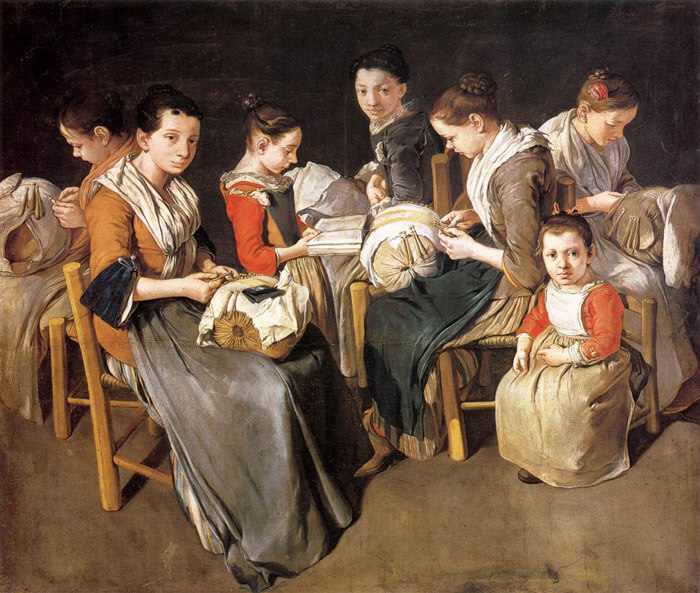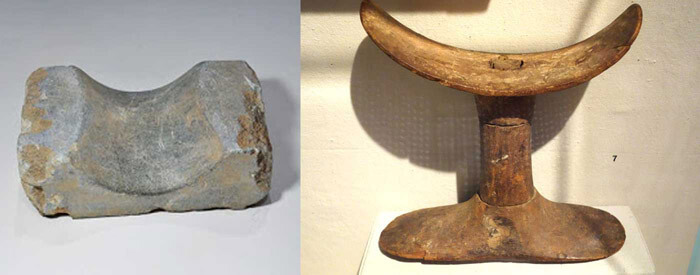The History of Pillow.
The history of the Pillow can not be separated from the history of human civilization itself. Humans are looking for ways to give comfort to the way they rest. According to various sources, the first group of people to use pillows were in the Mesopotamian region, in the period 7000 BC. The use of pillows change the way humans sleep, while sleeping does not use headrests. At that time, the use of pillows to sleep was only certain circles, especially the rich and fortunate. The amount of ownership of the pillow is a symbol of the status of the prosperity of the owner.
Use of Pillows in ancient Egypt.
In Egypt, the use of pillows has been associated with the phenomenon of preservation of the corpse (mummies) and ancient Egyptian tombs, In the range of 2055-1985 BC. Ancient Egyptian cushion form is stone or wooden headrests. The use of a cushion in Egypt at that time was mostly only to be placed under the head of a corpse, because the human head was regarded as the essence of life and sacred. The ancient Egyptians used wooden or stone pillows to wedge the heads of the dead. Then the pillow is also used by living humans as a means to restore the strength of the body, maintain blood circulation, and keep it from the distraction of evil creatures.
Use of Pillows In ancient Europe.
The Romans and Greeks from ancient Europe created the soft cushions. The material from the pillows used as a backrest to sleep, filled with reeds, feathers, and straw to make their sleeps softer and more comfortable. Nevertheless, still only upper-class people have pillows. People in ancient Europe started using pillows when going to church to kneel in prayer and to be placed in scripture. This is a tradition that still lives to this day. In addition, the Romans and Greeks used their pillows by placing the pillow under the heads of the dead as in ancient Egypt.
Use of Pillows In ancient China.
Chinese peoples use pillows made of various materials including bamboo, jade, porcelain, wood, and bronze. At that time, the use of porcelain cushion is the most popular. The use of porcelain cushions appeared first in the Sui Dynasty between 581 and 618. While mass production of porcelain cushions appeared in the Tang Dynasty between the years 618 and 907. Chinese adorn their pillows by varying forms or by painting animals, humans and plant. Ancient Chinese porcelain cushions reached peak usage during the Song, Jin, and Yuan dynasties reigned between the 10th and 14th centuries, but gradually began to disappear during the Ming and Qing dynasty between 1368 and 1911 with the creation of better-made pillows .
Use of Pillows in Medieval Age.
Until the medieval age in Europe, the pillow is still a marker of social status of society. Only upper middle class people (bourgeois) who use this sleeping supplement. However, this perception was undermined by King Henry VII of the United Kingdom. He forbade everyone to wear pillows except women who are pregnant. Men who continue to wear pillows are regarded as weak men. But the rule began to fade by itself in the 19th century. Pillow is a good tool as an addition to sleeping human sleep in general.
 |
Giacomo Cerutti - Women Working on Pillow Lace (The Sewing School) |
Use of Pillows in Modern times.
The longer, the more modern humans in creating activities that facilitate his life. Humans begin to creatively determine what materials are comfortable for their sleep needs. However, in reality there are differences in the use of pillow material in different parts of the world. In the Asian Continent, people use cotton / kapok as material for their pillows. In Europe people use wool, goose hair or straw bonds. Until finally in the 20th century humans have been able to create foam, fiber and silicon fiber latex as a substitute for materials derived from nature. Until now, soft cushions have been mass produced with various raw materials of foam, goose feather, silicone fiber and others. Currently, the use of cotton / kapok based pillow is lessened due to the lack of raw materials and side effects of less support for human health.



No comments:
Post a Comment